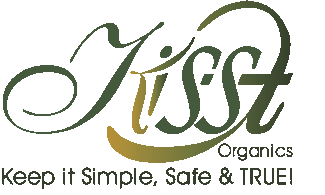Vegetables are a necessary
component of any healthy diet. They provide essential nutrients
including vitamin A, C and E, dietary fiber, folic acid, magnesium and
potassium. Vegetables are also low in calories and fat and contain no
cholesterol. Eating a diet rich in vegetables can help you maintain a
healthy weight and protect you from chronic disease. While all
vegetables are healthy, some provide more nutrients and health benefits
than others. A well-balanced diet should therefore include a rainbow of
vegetables.
Leafy Greens
Dark
green leafy vegetables are rich in iron, dietary fiber, calcium,
vitamins B, E and K, protein, carotenoids and other antioxidants.
Examples include spinach, asparagus, kale, chard, collard greens and
lettuce. Add color to your diet and meet your recommended dietary intake
of vegetables by eating plenty of dark leafy greens. These vegetables
are best eaten raw as in salad, with dip or as a condiment on
sandwiches. They are also good lightly steamed or eaten in soups.
Calciferous
Broccoli,
cauliflower, green or red cabbage, Brussels sprouts, bok choy, arugula,
mustard greens, artichoke and collard greens are all members of the
calciferous family. Calciferous vegetables have sulfur-containing
compounds, sulforaplane, that make them pungent and bitter. This
compound has potential carcinogen-fighting effects within the body.
These vegetables are rich in vitamin C and K, potassium, folic acid,
iron, calcium and phytochemicals. Eat calciferous vegetables raw,
lightly steamed or stir-fried.
Sweet Potato
Sweet
potatoes and yams are best when baked and eaten plain without added
butter. They can also be added to stir-fries, casseroles or soups. Rich
in carotenoids, vitamin A, B and C, potassium, iron and dietary fiber,
sweet potatoes will help you feel full for an extended period.
Bell Peppers
Bell
peppers are available in colors such as green, red, orange, purple and
yellow, each with its own unique flavor. Bell peppers are an excellent
source of magnesium, potassium, dietary fiber, manganese, and vitamin A,
B, C and K. One cup of chopped red pepper contains more than three
times the recommended dietary allowance for vitamin C. Add peppers to
any salad or stir-fry.
Beans and Peas
Beans
and peas are especially rich in protein. Whether eaten dried, canned or
raw, they are also a good source of dietary fiber, calcium, iron, folic
acid, magnesium and potassium. Examples include lima beans, peas,
kidney beans, soybeans, lentils, garbanzo beans and other legumes. Eat
raw or lightly steam. Add to salads, stir-fries, soups, chili or pasta
sauce.
Pumpkins and Squash
Pumpkin,
a low-calorie vegetable, is high in fiber and vitamin A. It helps boost
your immune system while providing you with lasting energy. Pumpkin
seeds are packed with magnesium. Try them roasted or sprinkled on salad.
Squash comes in varied shapes, colors and flavors. Both summer and
winter squash are rich in carotenoids, vitamin A and C, magnesium,
dietary fiber and potassium. They can be cooked and served along or
incorporated into soups and other dishes.
Allium
Allium
vegetables are a group of pungent and flavorful vegetables. Vegetables
in this family include garlic, onion, leeks, shallots, chives and
scallions and are known for their antibiotic properties. Consuming these
vegetables, especially when raw, can boost the immune system, reduce
inflammation and fight infection. Allium vegetables are most often used
in cooking to add and extract flavor from food.
Carrots
Rich
in beta-carotene, potassium, dietary fiber, folic acid, magnesium,
vitamin A, B, C and K, carrots are bright in color and sweet in taste.
Carrots contain high levels of carotenoids and vitamin A, which will
help keep your eyes and skin healthy and protect against infection.
Carrots can make a healthy raw snack or be grated and added to a salad.


No comments:
Post a Comment